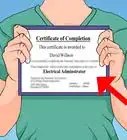This article was co-authored by Shawn Fago and by wikiHow staff writer, Eric McClure. Shawn Fago is a Master Locksmith and the Founder of Noble Locksmith, a nationwide locksmith company based in San Diego, California. With over seven years of experience, he provides commercial, residential, and automotive locksmith services to customers. Shawn attended California State University, Fullerton.
There are 11 references cited in this article, which can be found at the bottom of the page.
This article has been viewed 53,214 times.
Locksmiths are professionals that install, repair, and modify locks for clients. It may be the right career for you if you enjoy working with your hands, engaging in creative problem solving, and are fascinated by security technology. To become a locksmith, get a high school diploma or a GED. Then, complete a vocational program or take a short class on locksmithing to get the education necessary for certification. The certification process varies depending on where you live, so look the requirements up online. Submit your certification paperwork to the state where you live and find an entry-level position in your area to begin your career as a locksmith.
Steps
Getting Qualified and Completing Training
-
1Become a locksmith if you enjoy working with your hands and solving puzzles. Locksmiths are contractors that make, install, or repair locks. It is a reliable career path and is quite fun if you enjoy working with your hands to solve complex problems. Many locksmiths compare the job to solving puzzles, since it is an intellectually-stimulating job that requires a lot of critical thinking.[1]
- You must be at least 18 years old and have a clean criminal history if you’re going to become a locksmith.
- The process of becoming a locksmith can take anywhere from 3 months to 2 years depending on how much training you pursue and what the requirements are where you live.
-
2Earn a high school diploma or get your GED. To become a qualified locksmith, you must have a high school diploma. Sign up for a GED class in your area and complete the coursework if you never finished high school. Then, take the final exam to pass the class and earn your certificate.[2]
- It may be easier to find a job if you have a college degree, but you’ll still need to become certified.
- GED stands for General Education Development. In most trades, it fulfills the requirement of a high school degree.
Advertisement -
3Attend vocational school if you want formal training in the field. A vocational school is a post-secondary educational program that trains students how to perform a trade. After getting your GED or high school diploma, look online to find a vocational school near you with a locksmith program. Sign up, pay the tuition, and enroll in your classes. Spend the next 1-2 years learning about the construction, repair, and installation of locks. Locksmithing programs typically cover other security issues as well, such as surveillance, theft deterrence, and electronic locks.[3]
- Vocational school usually costs somewhere between $10,000 and $30,000.
- This is the most time-consuming way to become qualified, but you’ll get an extremely thorough understanding of the field. Most vocational schools help you get certified and find work after you graduate as well.
- If you live in a state that doesn’t require certification, vocational schools will typically award you with an accreditation that will make it easier for you to find work.
-
4Sign up for a locksmith class for a faster way to learn the craft. Locksmithing classes are typically hosted by private companies or locksmithing businesses. Look online to find a class near you if you want to learn the craft and become qualified without spending a ton of time and money on a vocational degree. These classes are typically very intensive, and will focus specifically on doors and home locks. These classes typically take 5-20 weeks to complete and may have a test at the end.[4]
- If you complete a certified lockpicking course, you will be awarded a letter of recommendation demonstrating that you’ve completed their coursework. This will help you get certified in most states.
- Locksmithing requires hands-on experience, and there are a lot of disreputable online programs. Sign up for an in-person class if you can.[5]
Tip: Unless you want a precursory introduction to the craft, don’t bother taking a class that won’t qualify you for a certification where you live. Look up the requirements for your specific state or country to find out if a formal training course can help you get certified.
Becoming Certified
-
1Look online to find the requirements for certification where you live. The certification requirements for locksmiths differ depending on the state and country that you’re in. Go online and look for the requirements where you live. Search on your state government’s official website to ensure that you’re looking at the legal requirements and not a private business’s advice on how to get certified.[6]
- The certification process can take 1-6 weeks depending on where you live.
- In some states, the Department of Consumer Affairs is in charge of locksmithing licensure. In other states, the business bureau regulates locksmith certification.
- In many states, vocational schools are allowed to certify students that graduate. The shorter 5-20 week classes are rarely allowed to give certifications, though.
- Some states and countries have no certification requirements for locksmiths. In these states, anyone can work for a locksmith.
-
2Submit an individual license application to begin the process. Almost all locksmith applications are completed online. Once you find the government page where you can apply for a locksmithing certification, click the link on the page to begin an individual license application. Enter your name, address, and other personal information to begin your application.[7]
- You can also call your local government’s consumer affairs line to find out where you can apply for a locksmith certification.
- You will typically upload each of your required documents to an online portal. In some states, you may need to mail these documents in.
-
3Send a copy of your identification and any additional paperwork. Scan a copy of your passport and state ID to prove that you are who you say you are. Then, provide copies of your employment history and any other required documents that you need to submit. This usually includes other work permits, certifications, and child support documents.[8]
- Most states list the documents that they require on their website.
-
4Complete a background check online or at a testing facility. Since locksmiths have the ability to disassemble complex security systems, complete a background check as mandated by your state. In some states, this can be completed online by uploading your state ID and entering your personal information. In other states, go to a private testing facility and have your fingerprints taken to confirm that your background is clean.[9]
- Depending on where you live, you may still be able to apply for a locksmith certification even if you do have a criminal history so long as you didn’t commit a felony or violent crime.
-
5Prove that you are qualified by providing supporting documents. If you graduated from a vocational school, submit a copy of your degree and transcripts. If you attended a shorter class that took place over the course of a few weeks, submit the letters of recommendation that the class provided you upon completion. This demonstrates that you have a familiarity with the trade and will not require precursory training to begin working on locks.[10]
- In the states where you do not need certification, you’ll still have a pretty hard time finding a locksmith position without completing vocational school or a locksmithing class.
Tip: In some states, you will need to complete a test either in addition to, or instead of providing supporting documents. This test will gauge whether you can diagnose problems with locks, understand the terminology of the field, and know how to perform basic locksmithing services.[11]
-
6Pay the required fees and wait for your certification. Once all of your documents have been submitted, press the “Complete” or “Submit” button to finish uploading your portfolio. You will be taken to a payment page to pay the fee associated with your application. Then, wait 1-6 weeks for the government to mail or email you your certification.[12]
- The application for your locksmith certification typically costs $50-300.
- It may take a little longer for the government to process your application if they have a large backlog of applications.
- In some areas, a locksmith license must be paired with an independent contractor’s license. If you don’t already have a contractor’s license, you’ll need to submit a separate application and pay an additional fee.
- Renew your license every 1-5 years by paying the renewal fee.
Working as a Locksmith
-
1Search for job postings online to find work as a locksmith. To find work as a locksmith, start by looking at online job posts. Upload your resume and submit applications to locksmith companies in your area. Some positions will specialize in car locks, while other companies will emphasize home security systems. Look for positions that interest you before applying for positions.[13]
- Your resume doesn’t matter nearly as much as your certification and your interview. Don’t worry if your job experience doesn’t perfectly align with a career in locksmithing.
- You can also call locksmiths in your area to find out if they’re hiring. If you live around smaller, older businesses, they may not list their available positions online.
Tip: Some locksmiths work as independent contractors and hire out their services alone. This requires a business license, though. You’ll also struggle to find clients without building a reputation and getting some experience first. Get some experience and learn the trade before trying to start off on your own as an independent contractor.
-
2Install new locks on homes, cars, and doors. The main duty of a locksmith is to install new locks. Show up to service calls at new constructions, family homes, and parking lots to install locks for your clients. Follow the directions of the client to meet their needs in terms of the type of lock and the location of each installation.[14]
-
3Repair broken locks and let in people who get locked out. Clients will often call a locksmith to fix broken locks or let them into a building that they’ve been locked out of. Show up to service calls for repairs or lock-outs as soon as you can. Explain the process to the client and check their ID to ensure that you’re giving the right person access to the building. Complete the work and provide your clients with new keys as needed to finish the job.[15]
- Most locksmiths stay competitive by answering emergency calls. These calls may come late at night or extremely early in the morning, so be prepared to lose some sleep every once in a while.
- If you’re called to unlock a home door for someone that locked their keys inside, remember to always check their government ID to ensure that the person calling you lives at the address. It is usually illegal to let someone into a building if they cannot prove that they live there.
-
4Cut keys and provide security advice to consumers. Many locksmiths offer key-cutting services for clients. If you work for a company with a brick-and-mortar store and have no client calls, you may be required to work behind a desk at the shop and cut keys. Use the client’s copy to create duplicate versions. This is typically done with a key-cutting computer program, but you may need to cut the key by hand using a cutting machine. Consumers may also have questions about upgrading their locks or improving their home security system.[16]
- Some locksmiths advance in their field by learning about camera surveillance and alarm systems so that they can market these services to clients.
Expert Q&A
Did you know you can get premium answers for this article?
Unlock premium answers by supporting wikiHow
-
QuestionCan you be a locksmith with a criminal record?
 Shawn FagoShawn Fago is a Master Locksmith and the Founder of Noble Locksmith, a nationwide locksmith company based in San Diego, California. With over seven years of experience, he provides commercial, residential, and automotive locksmith services to customers. Shawn attended California State University, Fullerton.
Shawn FagoShawn Fago is a Master Locksmith and the Founder of Noble Locksmith, a nationwide locksmith company based in San Diego, California. With over seven years of experience, he provides commercial, residential, and automotive locksmith services to customers. Shawn attended California State University, Fullerton.
Master Locksmith It will depend on the criminal record and the state. Every state, and even some counties, have different requirements. For instance, in California, it's just a background check. In Illinois, it's a background check and you have to pass an exam. In Texas, it's a background check, pass an exam plus you have to have at least two years experience. In Arizona, there are no requirements at all, anybody can just hang a sign on their door and call themselves a locksmith. These are just a few examples.
It will depend on the criminal record and the state. Every state, and even some counties, have different requirements. For instance, in California, it's just a background check. In Illinois, it's a background check and you have to pass an exam. In Texas, it's a background check, pass an exam plus you have to have at least two years experience. In Arizona, there are no requirements at all, anybody can just hang a sign on their door and call themselves a locksmith. These are just a few examples. -
QuestionI want to start my own business. Where can I purchase the necessary equipment?
 wikiHow Staff EditorThis answer was written by one of our trained team of researchers who validated it for accuracy and comprehensiveness.
wikiHow Staff EditorThis answer was written by one of our trained team of researchers who validated it for accuracy and comprehensiveness.
Staff Answer wikiHow Staff EditorStaff AnswerIf you're starting out on your own, the best thing you can do is to reach out to an an established locksmith that lives a little further than where you plan to work. Explain that you're starting out as a locksmith 1-2 towns over and need to figure out what to buy first. They will be able to walk you through what you need to buy to start out on your own. Be wary of asking a locksmith in your area, since you're going to be competing with nearby locksmiths for business.
wikiHow Staff EditorStaff AnswerIf you're starting out on your own, the best thing you can do is to reach out to an an established locksmith that lives a little further than where you plan to work. Explain that you're starting out as a locksmith 1-2 towns over and need to figure out what to buy first. They will be able to walk you through what you need to buy to start out on your own. Be wary of asking a locksmith in your area, since you're going to be competing with nearby locksmiths for business. -
Questionl want to learn locksmithing in a more advanced country. Where can I go to study?
 wikiHow Staff EditorThis answer was written by one of our trained team of researchers who validated it for accuracy and comprehensiveness.
wikiHow Staff EditorThis answer was written by one of our trained team of researchers who validated it for accuracy and comprehensiveness.
Staff Answer wikiHow Staff EditorStaff AnswerVocational schools in countries with more advanced security needs will be your best option. Apply for a student visa after applying to school and move to that country for 1-2 years as you complete the program. Keep in mind, most countries require certifications to be earned in the country where you work, so you'll still need to get certified where you live.
wikiHow Staff EditorStaff AnswerVocational schools in countries with more advanced security needs will be your best option. Apply for a student visa after applying to school and move to that country for 1-2 years as you complete the program. Keep in mind, most countries require certifications to be earned in the country where you work, so you'll still need to get certified where you live.
References
- ↑ https://youtu.be/UyBNu_Z_7-c?t=238
- ↑ https://www.bsis.ca.gov/forms_pubs/locksmith_fact.shtml
- ↑ https://www.consumer.ftc.gov/articles/0241-choosing-vocational-school
- ↑ https://youtu.be/NdHXZ7Z1_tM?t=16
- ↑ https://youtu.be/UyBNu_Z_7-c?t=51
- ↑ https://www.njconsumeraffairs.gov/fbl/Applications/Application-for-a-Locksmith-License-for-Individual-Licensed-in-Another-State.pdf
- ↑ https://www.oregon.gov/CCB/licensing/Pages/locksmith.aspx
- ↑ https://www1.nyc.gov/site/dca/businesses/license-checklist-locksmith.page
- ↑ https://www.oregon.gov/CCB/licensing/Pages/locksmith.aspx
- ↑ https://www1.nyc.gov/site/dca/businesses/license-checklist-locksmith.page
- ↑ https://www.oregon.gov/CCB/licensing/Pages/locksmith.aspx
- ↑ https://www.oregon.gov/CCB/licensing/Pages/locksmith.aspx
- ↑ https://www.careerexplorer.com/careers/locksmith/#
- ↑ https://t2conline.com/5-major-services-offered-by-locksmiths/
- ↑ https://t2conline.com/5-major-services-offered-by-locksmiths/
- ↑ https://youtu.be/wKmJ-voBmwc?t=101
About This Article
To become a locksmith, make sure you're willing to work long, oftentimes random hours since locksmiths are usually on call for after-hour emergencies. You should also work on developing good hand-eye coordination and spatial reasoning skills by taking classes in things like math, mechanical drawing, physics, and carpentry. Also, while you don't need a degree to become a locksmith, you'll probably want to complete formal training through a vocational school or community college. For tips on how to start finding work as a locksmith, scroll down!





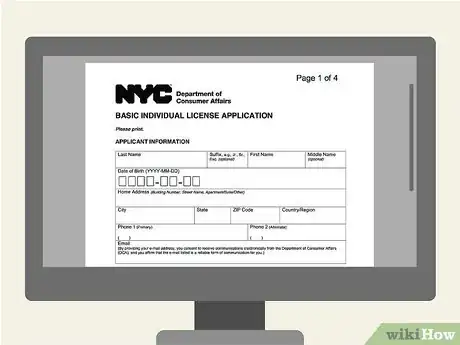

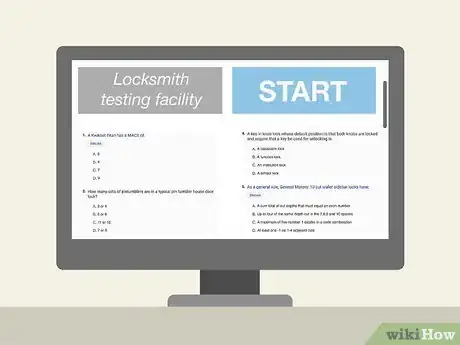
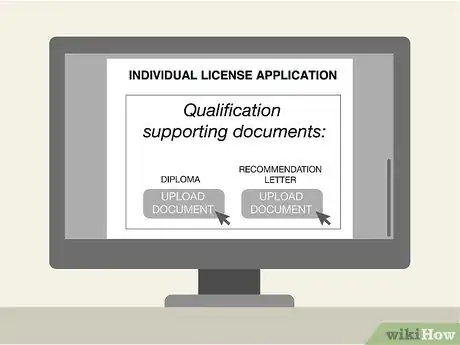
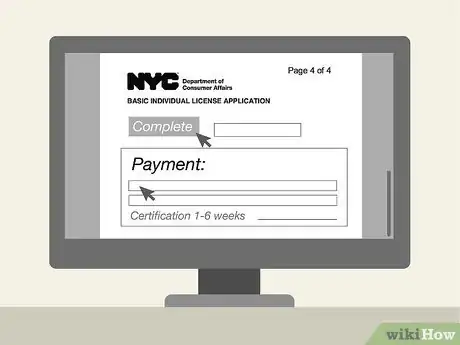

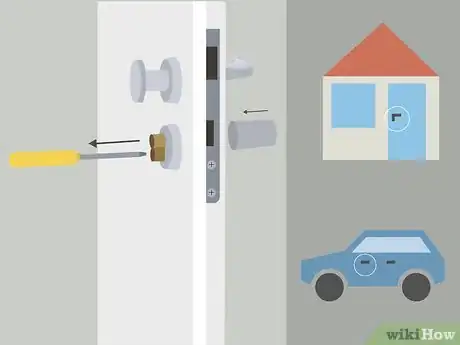

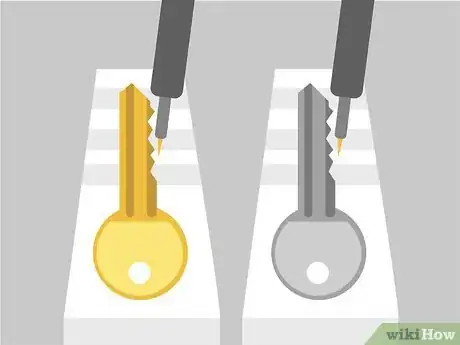

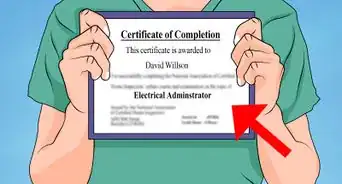


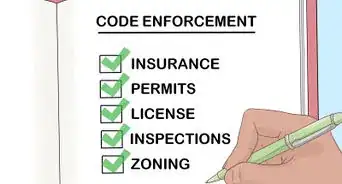







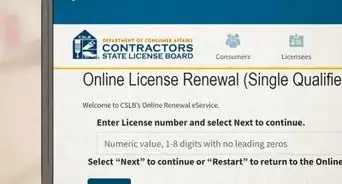
-Step-17.webp)










